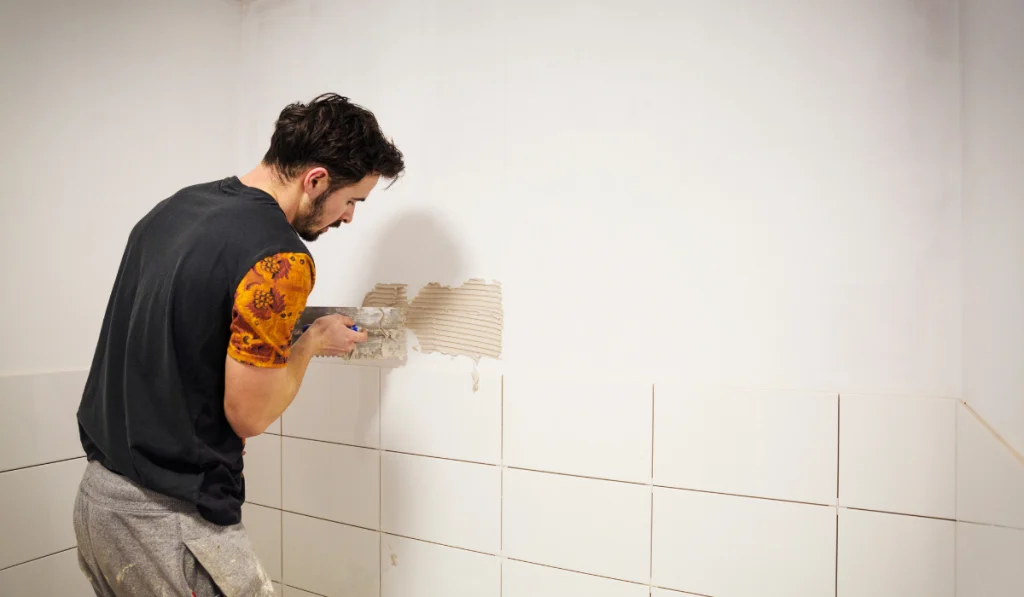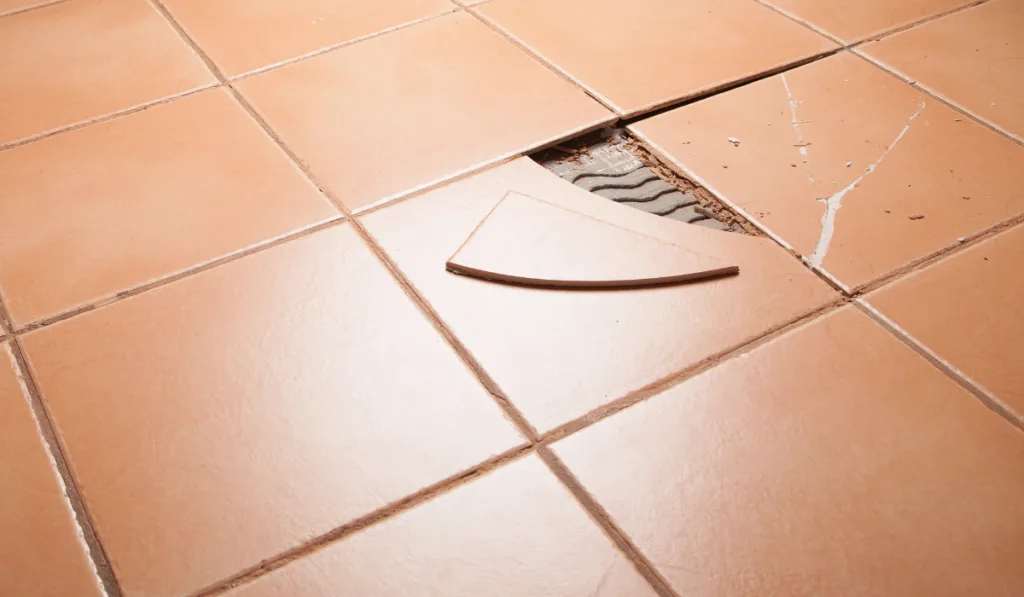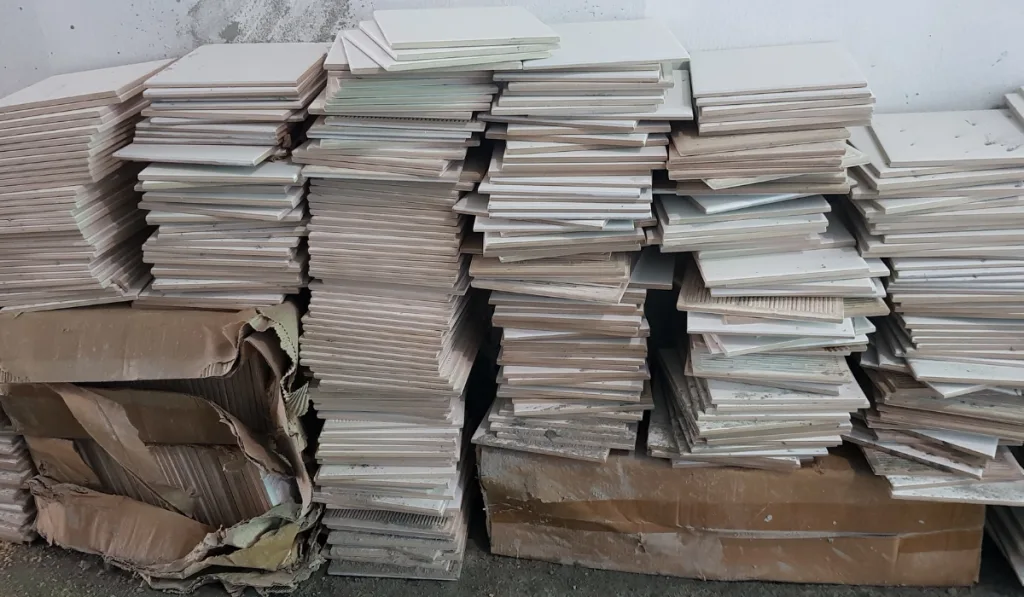Anyone who has ever completed a tile project at home likely has a newfound appreciation for what goes into it. Tile, depending on the area and design, can be very challenging. When tiles are done well, however, they elevate any space to give it a premium, custom feel.
One of the issues with tiles is that they can crack, chip, or break off. So, it pays to have extra tiles on hand to guarantee speedy repairs when that happens.
How much extra tile should you keep on hand?
As a general rule, you’ll want to buy an extra 10% of tile for every tile project. Frequently, people also have trouble finding the same size or design of tiles later on when they need replacements.

It’s sometimes hard to know how much extra tile to keep at home in the shed or the garage just in case something breaks.
No one wants to buy more than they have to, especially when it often collects dust on a shelf. Here are some tips on how much extra tile to keep.
Why Keep Extra Tiles?
Cost is always an issue in any home construction or renovation. Sometimes, buying extra tiles seems unnecessary and only adds to the bottom line.
It would help if you recognized that tiles often break during the build and installation phase and eventually crack and chip. If a new house settles, for instance, tiles will often crack.
Likewise, fragile tiles can fracture in an earthquake or when you drop something heavy on them accidentally.
Can You Return Tiles?
You must consider how many tiles you’re keeping before you finish your project. Whether it is you or the contractor you hire, there is typically a limited return window before your supplier won’t take the tiles back.
You probably have around 90 days to return tiles, but the time limit will vary based on where you buy the tiles. If you miss the window, you’ll have to keep all the tiles you purchased regardless of how much you want to keep.
Custom tiles, however, usually can’t be returned. You’ll have to keep those no matter what.
Tip 1 – The 10% Rule

It’s wise to keep 10% extra tiles. This is a good rule of thumb to guarantee you’ll have the tiles you need when one or more are damaged.
Does the type or location of the tile factor into how much you should keep? Absolutely!
When you become accustomed to having tiles in your home, you can adjust the 10% rule up or down based on where the tiles are.
For example, you may want to keep more extra tiles for the kids’ bathroom than the master bath because they’re more likely to break. Likewise, floor tiles in heavily trafficked areas are more likely to break than tiles in places with lower traffic.
Tip 2 – Stay in Touch With Your Supplier
It’s always hard to gauge how much extra tile you need. Adding an extra 10% to your initial purchase is smart, but it doesn’t guarantee you’ll always have tiles when you need to manage repairs.
An essential part of sourcing tiles is keeping in touch with your supplier. Even if you’re hiring someone to source and install the tiles for you, ask them where they are getting the tiles from.
You never know when they might retire or go out of business. You need to have that contact information in case you need more down the road.
Tip 3 – Store Your Tiles Somewhere Safe

Where you keep your tiles is also important. You’ll need to find somewhere they’ll be safe and stay in good condition for as long as possible. Ideally, you’ll keep them where children, pets, or anyone else from getting to them.
Typically, garage shelves, a cool shed, or the storage room in the basement are great places to store your tiles. Unfortunately, tiles can be easy to damage in boxes when they’re stacked on each other. Anything sharp or heavy that presses on them threatens not just to break one tile but an entire stack of tiles.
Light and heat can also affect tiles. If they’re exposed to sunlight for years, they’ll often fade. When you use them for repairs, you’ll end up with tiles that don’t match.
Keep them somewhere safe and in a place where you’ll remember where they are when you need them.
Tip 4 – Basic Tiles Are Easier to Find
We’ve already touched on custom tiles and how they’re usually impossible to return but using unique tiles can also be a pain when you’re looking for replacements.
Choosing basic tile patterns, shapes, and colors will come in handy if you need to order more after a project finishes. White subway tiles, for example, are common and can always be cut to your specifications when you need more.
When choosing tiles, think about where you’re putting them and how difficult it will be to buy them in the future.
Tip 5 – Tile Materials Matter

Sometimes keeping 10% extra tiles doesn’t make sense. When you’re buying larger granite tiles or some other natural stone, keeping that much can be cost-prohibitive. You may also lack the space to store them properly.
In addition, the tiles may need to be cut professionally before they’re put in, so it’s difficult to know how many you should keep.
Whenever possible, try to keep at least five full pieces of tile. Then, you can hire a contractor to cut them to exact measurements and install them.
Tip 6 – DIY or Contractor?
The installer’s skill also matters when considering how much extra tile you need to keep. If you’re trying your first DIY tile project, buying more tiles is wise because you’re more likely to make mistakes.
A professional tile installer will build tile floors and walls strong enough to handle foot traffic and last for years. When you’re paying a contractor to install your tiles, it’s normal to need fewer replacement tiles. Buy more when you’re installing yourself and leave it up to the contractor when you’re hiring the job out.
Regarding tile, it’s always a good idea to keep more than less. Certainly, however, keeping too much tile is a waste of money and space. Stick to the 10% extra tile rule until you feel comfortable with how many tiles you need and go from there.
